First Peace Corps Auto Mechanics Instructor (Ethiopia)
First Peace Corps Auto Mechanics Instructor
By David Gurr (Ethiopia 1962-64)
I entered Peace Corps Training to serve in Ethiopia at Georgetown University in the summer of 1962. Initially, Georgetown assigned me to teach geography because I had more credits in that area than any other Trainee. However, because of my earlier experience with repairing and building automobiles, my country director, Harris Wofford, told me that the Peace Corps wanted me teaching auto mechanics. I was assigned to a group of other technical-skilled Trainees comprised of a machinist, a sheet metal worker and two draftsmen.
Our group received little or no instruction in technical training, unlike the classes preparing others teaching academic subjects. Little stands out other than a tour of the US Steel plant in Sparrows Point, Maryland. Two officials from the Ethiopian Ministry of Education came to one session. They told us that there were two such schools: the Technical School in Addis Ababa and the Point Four School in Asmara. They did not tell us that the Russians had opened up a third technical school in Bahr Dar. Our principal concern was what the technical schools were like and what they had in the way of books and teaching supplies. They said that I would have the most modern teaching equipment in the auto shop because everything was new at the Technical School in Addis Ababa. They were unable to give any details of the other shops.
We learned that our head master at the Technical School in Addis Ababa had been the first Ethiopian to be sent to the United States under an educational exchange for an “education” in technical studies. We later discovered that he had learned very little about providing students with a technical education because, like us, he too toured industrial facilities and technical training schools, which we didn’t, receiving no training. Of course, we were likely the first technical teachers recruited by Peace Corps, Georgetown was an academic institution and they may have concluded that we already possessed the necessary skills to perform our assigned curriculum.
Following our eight weeks training, two weeks vacation before embarking for Ethiopia. Upon our arrival in country, we were trained another three weeks at the University College of Ethiopia before being assigned to our locations. Again, we did little as a group except visit the Awash Dam and the Wonji Sugar Factory, near the Dam.
On the first day of school, we met the Head Master, Ato (Mr.) Yilma Tadesse and were told that school would not begin for a week or two because many of the students had to travel from across the country to get there. The school was staffed with Ethiopian teachers who had been educated in the United States and Eastern Block countries, along with other foreign instructors from India, Great Britain and Sweden. I also learned that there were already three Ethiopian auto mechanics instructors assigned to the Technical School. I explained my situation to Harris Wofford and he agreed, transferring me to Asmara to teach at the Point Four School, attached to Kagnew Station. Also, I wanted to be near a woman Volunteer who was assigned to Keren in Eritrea, 90 km from Asmara .
Kagnew Station itself was the African link in the United States intelligence network that circled the globe before satellites took over that function. The technical school was nearly as well equipped as the Technical School in Addis. Upon my arrival the students in the Auto Shop asked me my age and learned that I was younger than most of them; therefore, they could not understand what I could teach them. At the time their Eritrean instructor were attempting to set the ignition timing on a Jeep and had spent the past two days trying to get it running. I asked for a feeler gauge, checked the gap on the points, making the appropriate adjustment, put the rotor and cap back on and timed the engine with a timing light, all in a matter of 15 minutes. I received no further comments about my age!
A couple of weeks later, I was informed that I had to return to Addis Ababa. Since my leaving for Asmara, one of the three auto mechanics instructor had gone abroad for additional technical training and a second one had just disappeared! As a result the Ministry of Education decided that if there was to be one volunteer teaching auto mechanics, he had to be in Addis Ababa.
The assistant Peace Corps director assigned to the volunteers in Asmara and surrounding Eritrea, told me that the timing was right since our new Jeeps were about to arrive in the Port of Masawa and I would instruct the assigned Volunteers on my return trip to Addis Ababa. The trip took the better part of three days, spending the night with Volunteers in Mekele and Dessie;
Returning to Addis, I moved in with Bill Dowell, a former tool and dye maker for Boeing and Roland Sebacher, a sheet metal worker from St. Charles, Missouri, both of whom I had trained with at Georgetown. They needed a third Volunteer in order to rent a house which was half a block away from the Technical School. Needless to say, they were both skilled in their respective professions, whereas I lacked formal training.
I believed at the time that I could teach auto mechanics because I had built my own car, included two engines, and had been involved in organized drag racing and sports car racing. However, I was sadly mistaken, and on occasion, a disappointment to my students. I did not know the theory, because I had taken only shop classes in high school, and many of my students were not concerned with learning the practicum anyway.
In Ethiopia, students took European-style leaving exams at the end of intermediate and secondary schools. Future advancement depended on passing these exams. The students prepared for these exams by memorizing things by rote like their European counterparts. They wanted the words not the manual arts practicum in the auto shop.
While writing my Masters Thesis on Ethiopia’s first five year plan, after returning to NYU, I learned that those students scoring 80 or better out of 100 points on their leaving exams from intermediate schools were allowed to proceed to academic secondary schools. Students scoring 70 or better were allowed to attend the technical schools. In essence, many students entering the technical school scoring between 70 and 80 percentile, hoping to pass the secondary leaving exams and proceed to university studies.
Thus, a number of students were not interested in working with their hands. This is a cultural phenomenon and validated by an expression in Amharic, their official language, which translates as follows: “from the mouth comes master, from the hand comes slavery.” Some showed their disdain for manual work by growing an extremely long fingernail. When they resisted participating in the auto shop practicum, I would threaten to put their nail in a vice and break it off unless they participated, which they thought was quite funny! Many of the students wore white shirts and ties, again displaying their desire to enter workplaces where they would not work with their hands.
The machinist Bill Dowell attempted to gauge their visual skills by administering a standard test to gauge his machine shop students’ ability to read and understand plans, as they are a vital part of the tool-making process. The test included a group of 16 objects, each showing three different views e.g., top, front and side view of an object such as a step, or block. One line was left off of one view in each diagram and the student was expected to fill in the missing line. His students scored only three or four out of sixteen. However, he realized that they did not encounter many square objects in life; for example there houses were round as were the Orthodox churches that the vast majority attended. He subsequently modified the test showing rounded objects, again with three views with one curve missing in one of the views. Immediately, their scores jumped into the teens.
My Ethiopian counterpart, Ato Tadessa Gebre, had spent four years in Yugoslavia and had acquired a great deal of knowledge in their technical training education system, certainly more than I had. We reached an agreement in which he would handle the practicum and I would teach in the classroom. He had no problem working with his hands. He confided in me that he was a Gurage, a small ethnic group living near Addis. He told me that many Gurages came to Addis after finishing school and performed any menial work such as carrying materials, and eventually working in repair shops and construction into a good-paying positions or opening stores. After they had saved enough money, they retired early in life to buy a small piece of land back home on which to sustain them in retirement. I subsequently learned that calling someone a “Gurage” was an insult implying that the person worked with their hands.
Ato Tadessa insisted that I call him “Taddy,” as a sign of affection and he was amenable to whatever I wanted to do in the shop. However, he would always only call me Mr. David (In Ethiopia, the first name is the father’s first name and the second name is the Christian or given name.)
Ethiopia used the metric system, with which I had little familiarity. The British would use it when referring to engine displacement, in liters or cubic centimeters, whereas we would specify displacement in cubic inches.
The students also were taught the Italian names for mechanical things. While the Italians had invaded Ethiopia in the mid-‘30s, when they were defeated in ‘42, many of them remained, or emigrated from former Italian Somalia and Eritrea. It seemed to me that with the general cultural abhorrence of working with ones hands, the Italians filled the need for craftsmen to construct buildings and repair cars. As for Amharic, the term “mooshal,” seemed to mean nearly any type of tool. To say the least, the students were as confused as I was!
Added to the differences in the use of technical terms, the British used the Whitworth system of wrenches, measured in fractions of an inch, but different than the American inch system. The tool room keeper became bewildered when I asked for a 9/16th open-end wrench and brought me a sizably larger Whitworth one with the same number.
Hand tools were kept in a storeroom, for fear of theft, in a metal screened area on one end of the shop and there was a relatively uneducated tool master who dispensed tools to the students upon request. The conciliation of the tools was poor: on occasion, I would have to take an open-end wrench and compress it jaws in a vice in order to keep it from coming off and “jimmying” a bolt.
During a conference of Volunteers in Asmara during our first Semester break all of us teaching technical subjects complained to Ministry Officials about the lack of supplies and tools. As a result, Peace Corps did provide me with funds to purchase a German tool box of needed tools from the local market. At least I could use my open ended wrenches to serve as a guide in compressing their well-worn wrenches in a vice. I kept the box under my desk and Taddy would not allow any student to enter the room without one of use being there, again for fear of theft as our students had few financial resources.
Much of the new equipment which I had been told about during training was broken. It turned out that the lathe; boring bar and engine test stand in the auto shop had been sent to Ethiopia as part of a Yugoslavian industrial exhibition. When the exhibition closed, these three pieces of equipment were left for the Ethiopian government and they in turn had them placed in the Technical School most likely because they were too big and heavy to be returned. However, as I was to learn upon my arrival at the school, only the engine test stand worked and there were no manuals or spare parts.
In addition to the cultural and language challenges and poor quality tools, spare parts for vehicles were unaffordable and had to be rebuilt. Even rebuilt parts were either non-existent or expensive. For example, we could only buy items such as brake lining material and install it on the original shoes with copper rivets that came supplied with the shoes. Some year later, when I was collecting parts for my next restoration project, I bought an original replacement kit for relining brakes and discovered that they were of the same variety as in Ethiopia: brake lining and copper rivets. In fact, one of the few practical learning experiences in the shop was to reline brake shoes, using rivets, the only thing for which I can remember the students were graded on in the shop itself. Similarly, we had to make our own gaskets, again because of the lack of spares. I had learned somewhere that using a ball peen hammer; I could tap gasket material over a metal casting; surface and make a suitable gasket. I taught this technique to my students.
However, using the tools from the storeroom on the engines that were on display in the shop was prohibited. Taddy felt that if we dismantled anything, the students might steal the parts and sell them.
There was a complete flathead Ford V-8 and during the annual exhibition of the school open to the pubic, it was put in the dynamotor, the only piece of equipment, and started up periodically. The racket of open headers brought everyone to the shop to see what it as happening. Having built a flathead V-8 for my hot rod, the sound brought back fond memories
The boring bar had ceased to function because the threads on the boring head that held the cutting tool were stripped. Fortunately, Bill, the machinist was able to cut a new head from a solid piece of brass and it worked satisfactorily. Of course, there were not engine blocks to be bored so it too just sat there, being inoperable during the practicum.
I got one of the two brand new International Harvester Scouts, which had been rolled. The students stripped off the body and it was used for visual purposes only. At least it was a complete vehicle, and when shorn of its battered body, could be used to show a complete automobile to the students. This constituted serendipity!
The Peace Corps expected my students to hammer out the Scout’s body and make it roadworthy again. But, the absence of materials for doing this, other than body putty and primer, and tools like hammers and body files, made this impossible to do. Our body man Ato Zewede, did not know how to shrink stretched metal or pull small dents by soldering pennies to welding rods, soldering the pennies to the dented surface and using vice grips, of which I had the only working pair, to pull small dents. Even at that, the body was beyond repair and really needed replace panels, which were not available except from the manufacturer.
Another serendipity to my presence at the auto shop in Americans bringing their cars for work, most often for paint jobs which Ato Zewede could do employing a number of students in prepping the body for paint. Many students could be kept busy sanding primed surfaces and Ato Zewede could spray paint very well. Customers insisted on paying and these funds were turned over to the school. In addition, I would occasionally get a carton of cigarettes as “bakshesh,” an Arab word for gift for patronizing a seller.
I did have difficulty preparing for lectures. I would occasionally review the material and then attempt to explain it to the students. Ironically, the use of rote learning helped me because the students were always prepared, having memorized the material. All that I had to do was answer questions about words or processes that seemed to have not been understood, since they required critical thinking at the time.
Books were available for the students from the storeroom but in well-used condition with the majority of them being WWII instruction books employed by the military. Being paper and having been around since the Technical School was founded, they were well worn and marked up. As a result, I had my dad buy me an auto mechanics book and ship it to me so that I had more up-to-date information to aid my teaching.
Frank Grossmann, who taught English the second year at the Technical School volunteered during the summer to clean up the school’s storeroom and discovered that new books on all subjects were in the storeroom. Because the storekeeper was held personally responsible for any loss of books and supplies, his solution was to not issue them! Frank also found a number of things that been given to the school, but had nothing to do with technical studies, such as starting pistols with blank ammunition. He also brought slide rules and drafting equipment that had never been unwrapped. Such a waste!
When I taught automotive electricity to fourth year students, I made the mistake of saying that it was invisible and therefore, they had to take on faith what happened with electrical circuits and make sure that they were continuous, repairing any interruption that was found. I even asked a skeptical student to hold a spark plug wire while I cranked the engine. He got the point, literally on how the collapsing field in an ignition coil charges a primary wire fed to the distributor and on to a spark plug wire! When the students assigned to this class began to challenge me about how automotive electricity really worked, I became belligerent. I then gave them a test which was overly technical, graded them down accordingly and they subsequently refused to attend my class. They went to the head master and he transferred them to the Electrical Shop where the Swedish instructor taught them the class. The instructor took me aside and said, don’t worry, let them memorize, test them accordingly and they will either learn how to apply the knowledge in the future or not; he did not think that it was critical. That gave me my first hint that other foreign instructors were not about to rock the educational boat as it were. Conversely, I was to learn, employers in Ethiopia conducted their own training.
The head master still valued my talents. Within days of my arrival, he asked me to teach a course in Shop Management. The text was nothing more than a mimeographed copy and was easily followed, hence taught. It was a new course and the students loved it since it did not involve working with their hands in a practicum. However, again, I attempted to instill critical thinking in their minds. On one test, I drew a diagram of a table with a box on it and a vertical post next to the table, with the instructions to draw a mechanism for transferring the box from the table to the floor. Many of the students did very well. One student did come to me after receiving his graded paper and pleasantly argued that he got it right. As I recall, I drew an additional line on his paper and raised his grade, to his satisfaction.
One of the great advantages of teaching Ethiopian students was their respect for authority. While obviously prudent on their part to not become a problem student, it was also ingrained in them from their culture. Once they achieved a position of respect in life, they expected to be treated with dignity as well. Only once did a students get sideways of me and I ordered him out of the shop. He said fine and went to the dean of students. Apparently, the dean of students beat him severely and he returned the next day taking my hand in both of his and bowing and expressing his regrets for his behavior. I told him immediately that I too had overacted and we became the best of friends, at the distance of course that separates students from their teachers.
Only once did I observe a conflict between the students in my class. I had no idea what caused one slightly small student to jump to his feet, obviously taking offence to the comment of another. A third student immediately jumped to his feet and in Amharic, said “Toe Baca,” interpreted as “enough!” The students immediately explained that the smaller student was a Somali from Eastern Ethiopia and his ethnic group had been insulted by an Amhara. This was at a time when Ethiopian and Somalia were nearing a war-like state.
Students studied hard, with none of them exhibiting feelings of resentment of their position at the Technical School, because many of them believed that they could still pass the Secondary School Leaving Exam and be eligible for the university.
Testing was a tiresome process. We were supposed to type out our quarterly tests and submit them to the office for copying on an “alcohol” printer. In essence a paper with blue print appeared when the typewriter letters stuck it was put on the printer’s drum and cranked to produce copies. It was relatively easy to correct a mistake, turning over the paper and scraping off a misspelled letter or word, and retyping it over; although, this could be done only once successfully. However, the schools alcohol machine did not print very clearly, making words hard to read, adding to the students’ problems in test taking. Again, relying on our limited support budget for the Peace Corps, we got a Gestetner printer from the USAID warehouse. We would then type a master copy and run it ourselves, to the dislike of the head master but to the benefit of the students. These masters were correctible with a fluid that filled in any mistakes. Most importantly, we could produce an infinite number of clearly legible copies because the ink supply came through the typing impressions on the master. Of course, it was messy and we teased each other about having black hands after preparing tests.
On-going testing in class was done as often as once a week. However, as with the Leaving Exam concept, students at the end of each quarter had to sit for a comprehensive written exam of all that they had been taught that quarter. It wasn’t too bad at the end of the first quarter, since it ended in time for Orthodox Christmas. But the second quarter examinations were grueling for the students. Being largely Orthodox Christians, they observed a Lenten period of 56 days compared to the 40 that the Western Church observes. As a result, they had to fast the entire period, as they did every Wednesday and Friday, consuming no meat products, except fish, which they could not afford; we were hundreds of kilometers from the sea. As a result, they were extremely weakened by the absence of vitamin B in preparation for Easter when they had to sit for the exams. We simply took pity on them and did not expect the usually required answers in great detail, using some of their essays as justification for grading others in which their writing and memory were weak.
Of course, given this situation of responsibility, when anyone of us was asked to head the shop, with the associated responsibility for maintaining stores and equipment, we refused since we felt that we could not make up any losses. Roland went even further, refusing to do so because he did not want the United States Government to have to pay for any losses.
During the second year, an Englishman named Geoffrey arrived to teach auto mechanics at the school. He suggested that we draw objects such as engine parts with colored chalk on the classroom blackboards. Then he proposed painting the actual cut away objects in the shop in matching colors of paint, thinking that the students would memorize the colors and match up the practicum with the instruction. However, no matter what we tried, if a student really wanted to be a mechanic, they did well, both in the classroom and practicum in the shop. Our best students came from Asmara, where they were surrounded by Italian mechanics and their Eritrean associates, which seemed to suggest to them that it was an honorable profession. They did better than the others and were more easily placed in employment upon graduation.
When Geoffrey arrived, he too entered the classroom. This totally confused the students because he and I used our respective automotive vocabularies to describe things. For example, I remember having a discussion about wrist pins. He insisted that they be called them “gudgeon pins” because a wrist pin connecting the rod to piston twisted about the wrist pin just like a gudgeon fish that swims in the English Channel. As George Bernard Shaw stated so well, to paraphrase: Great Britain and the United States are two countries separated by the same language!
Geoffrey and I found that what we in America called an automobile was a motor car or just a motor in Great Britain. Ironically, my sports car club associates were adamant in referring a motor to a starter motor with “engine” being what the British called a motor.
The following is a list of British and American terms for the same mechanical parts taken from Behind the Wheel, by Lord Montagu of Beaulieu and Wilson McComb (Paddington Press Ltd, New York and London, 1977): (asterisks * denote differences that appear in the general text of the book:
ENGLAND U. S.
Accumulator Battery
Beaded edge Clincher rim
Big-end bearing Rod bearing
Bonnet Hood
Boot Trunk
Bottom gear low gear
Bulkhead Firewall
Capacity (engine) Displacement
Change gear t0 Shift gear, to
Carburettor carburetor
Commentator Alternator
Cover (tyre) Casing
Crown Wheel Ring gear
Damper Shock Absorber
Dickey Rumble seat
Epicyclic Planetary
Estate car Station wagon
Gear lever Shift lever
Half shaft Half axle (or reverse, axle half)
Hood (folding) Top
Indicator Turn Signal
Lamps Lights
Lorry Truck
Mudguard Fender
Overhead valve Valve- in-head
Paraffin (oil) Kerosene
Petrol Gasoline
Propeller shaft Driveshaft
Saloon Sedan
Screen washer Windshield washer
Scuttle Cowl*
Shooting brake Station wagon
Widescreens Side curtain (or side window)
Side valve Flathead, L-head, T-head
Silencer Muffler
Spanner Wrench
Sparking plug Spark plug
Starting handle Crank handle
Top gear High gear
Track (with) Tread
Two-stroke Two Cycle
Tyre Tire
Tyre lever Tire iron
Wind, to Crank, to
Windscreen Windshield
Wing Fender
Beside the wrist pin mentioned above, a van was an American pickup whereas we us the same term to describe an enclosed smaller truck, and like the pickup, also used for hauling. And there were other issues: for example, a commentator which he called a generator, was to me that portion of the armature inside of the electrical fields of the generator that transmitted the electricity generated through the brushes to the voltage regulator and hence to the battery. When I pointed this out to Geoffrey in the Point Four Automotive Electrical Manual, he said well, that is “American English,” proving Shaw’s analogy about our two countries use of the language.
So as not to confuse the students, Geoffrey and I agreed to teach separate subjects to the each group of students. However, Geoffrey and I got along as well as we did with Taddy.
In spite of the cultural and linguist differences, our success in finding work for our students upon graduation eventually came from who we knew rather than what they knew. TWA was under contract with Ethiopian Air Lines (EAL) to maintain their aircraft. TWA was based in Kansas City, MO. The airline had been started after the war when a couple of American military air transport planes (C-47s, the military equivalent of the DC-3 civilian aircraft) flew from Egypt to Addis Ababa to constitute the first phase in the development of EAL, the American pilots being the first EAL pilots. The Airlines had contracted with TWA to operate its repair shop, the only jet engine repair shop in Africa at the time that we were there. The husband of the woman who ran the US house furnishing warehouse for American Embassy and USAID was one of their advisers. The adviser in turn felt that with Americans teaching the students at the technical school, they would be sufficiently prepared to learn from TWA and work for EAL. TWA felt, as did nearly all businesses, which we encountered, that if workers have been taught the rudimentary knowledge, the company could teach them the specific skills they would need to perform satisfactorily. Many of the students in our shops got jobs with EAL at the end of our first year because of this connection.
The following year, the Asab Oil Refinery hired graduates from the auto shop. I did not envy them because Asab was unofficially the hottest port in the world, Asmara, Eritrea being the officially hottest at the time. The oil refinery was being set up, having been dismantled and sent to Ethiopia by Russia. It was rumored that it had originally been given by the French to Russia after the revolution and the Russians no longer had any use for it. Seven of my graduating students were hired by the refinery. The downside would have been the heat since they were used to living at 7,700 feet!
At the end of service, we were evaluated by Charlie Peter’s Peace Corps Evaluation Office. Of particular interest to the Peace Corps was how technical teaching went. We laid out all of our concerns to the evaluator in person and he asked probing questions. I recall Bill, Roland and I painted a bleak picture for him. We told him of the numerous challenges we faced and the absence of support we received. In my case, I never got over being told that the auto shop had new equipment in it and upon arrival, found that it was not working. I expressed my frustration with not getting up-to-date technical materials with which to teach the students from the school’s own material and books.
Roland and Bill were able to make up for much of this deficiency by their extensive on the job knowledge of their respective trades: sheet metal and tool and dye maker. Unlike my time spent in the classroom, they simply implemented a practicum in their respective shop setting, and they each had fellow instructors who had been trained in the United States.
We described how we coped with some of these deficiencies. A jeep had flipped over and had not only broken the axle, but the axle housing as well. With the spare axle that came with the vehicles, Bill machined a sleeve out of brass and inserted it in the severed axle housings. Roland welded the axles housings together over the brass insert. Of course, without proper body bending equipment, the body of the jeep could not be repaired. However, it did involve three shops and the students learned what was possible.
We told the evaluator that it was “Peace Corps ingenuity.”
We learned later that based on our evaluation, Peace Corps would send no more technical teachers to Ethiopia. I also suspect, Peace Corps did not recruit many future technical teachers. Don Romine, one of our APCDs at the time, told many years later when I worked with him at ACTION, that our project was unique and that he had never seen a better qualified groups of PCVs in any other project and given that he was assigned to Peace Corps, I can accept his conclusion. I now know from experience that when a new program starts and seeks participants, the most dedicated people do volunteer: in recruitment parlance, it is called “skimming,” as in skimming the cream off of the top.
We told the evaluator that our major achievement was employing our graduates. Because of our presence at the Technical School, employers favorable disposed to recruiting our students. TWA took a number of our students from all three shops. Employers prefer to employ persons possessed a working knowledge with the work required and the employers would provide the necessary training for them to perform effectively. Also, this has been validated through my life-long experience with volunteers, both Peace Corps and my subsequent 13 years with AmeriCorps*VISTA: no matter what one’s preconceived ideas, they will self-actualize from the experience accomplished through hands-on service of learning by doing.
David Gurr (Ethiopia 1962-64) from Spokane, Washington attended Eastern Washington College and taught auto mechanics at the Technical School in Addis Ababa, and Economics at the Engineering College Extension School. After the Peace Corps, he earned an MA in Economics at NYU and a Masters in Philosophy. With a handful of RPCVs from Ethiopia, he assisted in the Ethiopian and Eritrean Peace Initiative to end the first war of 1998. This initiative was recognized as a significant factor by the United States Institute for Peace. He would spend forty years working for variety Anti-Poverty programs and retired from the government in 2006 to write a book on his life-long experience with automobiles.
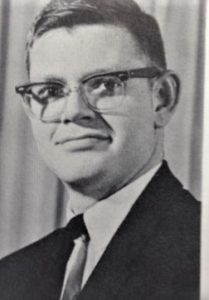
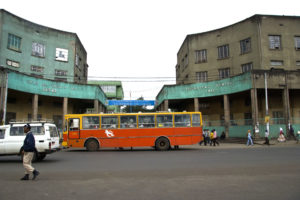
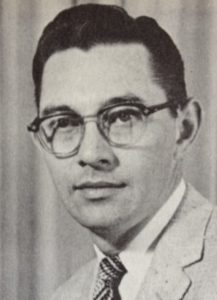
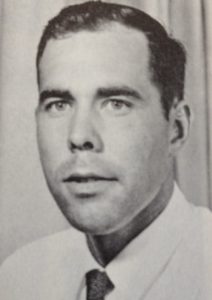
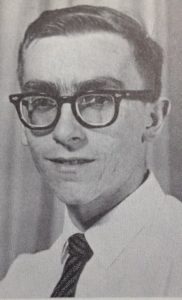
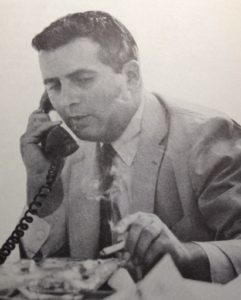
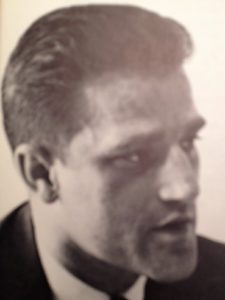
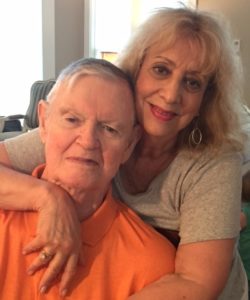
Dave, what a remarkable memoir of that distant time and place—keen, entertaining, and valuable. I wish Harris was still with us to read it. But many of the rest of us are, lucky us. Thank you.
Very enjoyable read that brought back memories. In 1964, several volunteers and I organized books by subjects and grades in an Addis book warehouse. Previously, the books were on the floor. Once we finished, we were told the neatly arranged books would never be distributed because the manager did not want the risk of lost or stolen books. My students were appalled when ever they saw me carrying anything or using my hands because I was a teacher. I witnessed a friend who refused to carry a bunch of bananas. Instead, he walked half a mile to have a servant come back to carry the fruit. That was Ethiopia but somehow it is still a thrill to meet Ethiopians fifty four years after completing my PC service
Describes well the cultural barriers involved in trying to “help.” Brought back many memories.
Jim Moon. Jimmy 68-70.
A fascinating account. Thanks for sharing these memories.
Thanks Dave, memories. We had a student in Dire Dawa, 9th and 10th grades, who graduated two years later and
went to work for EAL (not as a mechanic). Several years later he was able to fly EAL to NYC and meet Margaret and me.
He then subtly announced he would like to go to college in the City. Amazingly, we were able to get him enrolled and 4 years
later he graduated from City College of New York. After U.. immigration forced him to return to Ethiopia, while the Derg was
ruling he survived, married, had 4 sons, made it back to the U.S., settled in Washington DC as an American citizen, and just
retired with Social Security. All sons are doing well with several college graduates and hard at work. If it hadn’t been for
EAL the United States wouldn’t have been blessed with this immigrant.
Swell memory, great comment, good job done. Thank you for this.